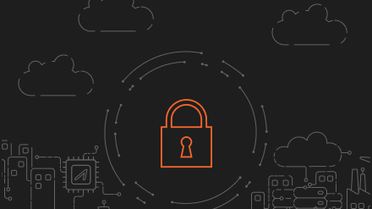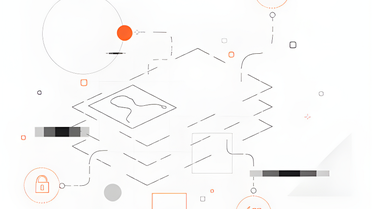Undoubtedly, technology’s impact on the financial sector is diverse and increasingly transforms all types of market entities, from traditional banks to fintechs. With the transformation brought about by modern applications, financial entities operating in the Latin American market can offer their customers better services and experiences.
In Brazil, 60% of the adult population uses at least one type of electronic transfer, such as Pix[1]. Meanwhile, e-wallets are already the main payment method for Argentines[2] and, according to estimates, will surpass credit cards as the main form of payment in Mexico by 2024[3].In this article, you will discover how edge computing can help banks in this constant modernization, also making it easier for the developers working on companies in the banking industry. Check below five major benefits this technological infrastructure offers the sector.
1. Banking cybersecurity
Many financial entities use hybrid platform solutions to store and run their applications. Each architecture, however, uses different security techniques, which makes it difficult to effectively protect these applications and, consequently, the end user. On the other hand, an edge computing platform allows you to apply the same security policy to all your content available on the internet.
With Azion Web Application Firewall, for example, you can protect your applications, APIs, and networks from OWASP Top 10 threats, DDoS attacks, bad bots, and other sophisticated attacks wherever they are hosted. Azion WAF counts on scoring algorithms that analyze HTTP and HTTPS requests and can detect and block malicious activities before they reach the bank’s origin infrastructure without impacting the performance of its applications. And you can integrate and configure it all in just 30 minutes.
If the bank for which you develop applications still uses legacy applications, edge computing can also ensure network security. That’s because Azion WAF offers protection against developing attacks for both modern and legacy applications. In addition, a full security stack such as Edge Firewall draws circular security perimeters on each of our edge nodes, ensuring your entire infrastructure is protected, whether from attacks targeting the network or application layer.
Want to learn more about the role of edge computing in banking cybersecurity? Then read our blog on the subject.
2. Guaranteed Uptime
The credibility of any financial entity is directly related to the availability of the virtual services it offers. And the cost of a system outage, as you may know, is quite high — whether for traditional banks, virtual banks, or any digital payment platform. With edge computing, however, this concern is greatly minimized. By relying on a wide network of edge locations, financial institutions whose websites and applications run at the edge are guaranteed full availability. If one of the edge locations fails, the system will look for the second closest to the user to process their data.
By relying on Azion’s Load Balancer, you can add multiple origins for your content (whether they are on-prem, in the cloud or at the edge) and select the load-balancing method that best suits your needs (such as Round Robin, Least Connections, or IP Hash. This way, if any of your origins faces problems such as downtime or an attack, all your traffic will be rerouted to the others, without your clients never noticing something has happened.
Azion’s Load Balancer will verify the server respecting the balancing method and weight you chose. Suppose any of them returns a 404 (Not Found) error, a 5xx error, or takes longer than the timeouts you configure for the response. In that case, the other servers will be consulted before presenting any errors to end users. Thus, avoiding failure in the availability and, consequently, the significant loss of revenue due to system problems.
3. Local Compliance
All companies must comply with the security and data protection regulations of each country in which they operate. For banking services especially, the responsibility to protect critical user data is undoubtedly the top concern. In this regard, relying on a cloud infrastructure may not be the best choice since as it’s a centralized infrastructure, the cloud can’t meet local compliance in some countries where it’s not physically present.
On the other hand, edge computing is an excellent way to maintain local compliance. Edge computing gives banks the flexibility to comply with the regulations and requirements of each country in which they operate. This happens because the edge computing provider itself is responsible for applying the most important compliance rules required globally, allowing each customer to be concerned only with specific regulations for their own services.
Furthermore, by relying on a zero-trust security architecture, financial entities that create and run applications on Azion’s Edge Computing Platform can make sure their compliance efforts go even further. The zero-trust model replaces a network-based approach to security with a data-based one. This means that, by taking this approach, banking institutions can have their different types of data treated differently based on specific regulations and associated risks, simplifying compliance by significantly limiting the scope of data usage restrictions.But despite its importance, many companies still have the idea that investing in zero-trust security means having higher expenses. And according to a Fortinet research[4], one of the top zero-trust obstacles listed by security professionals is the difficulty of choosing providers. Therefore, if you need help demystifying the zero-trust architecture and learning its benefits, you can check out this article.
You can also learn about some of the main security and compliance standards offered by Azion on our compliance page.
4. High performance
When we think of modern financial entities such as virtual banks, web applications that run faster are crucial for customers to remain satisfied. After all, the transactions and payments’ velocity can be critical for the decision of whether to migrate or not to the competing bank. But ensuring good performance isn’t an exclusive requirement of modern institutions. Traditional banks also need to be aware of this issue, which can be easily solved with edge computing.
On the Azion platform, we count on several layers of solutions that aim to improve performance across all the computing processes: first, your requests will always be sent to the closest edge location; second, we also adopt a variety of caching techniques that make sure your content is always stored close to your final user; and if there are any problems with traffic, our cutting-edge routing techniques can ensure your clients always get to your data, fast; finally, our platform is able to optimize delivery for all devices.
By associating all these efforts with a number of libraries, frameworks, and tools that allow you to build the best modern applications, we can make sure you deliver your clients outstanding performance at all times.
5. Cost optimization
If we consider the data operation and the large IT teams that work to develop web applications for banks, we understand the huge investment that technology requires from financial institutions. Comparing cloud and edge computing as the main architectures on which banks run their applications, we conclude how beneficial the edge can be in terms of costs—which allows banks to invest in the work of developers rather than spending on infrastructure.
Because it is a serverless and NoOps edge platform, Azion creates and manages the system infrastructure for the companies that operate with us so that developers can just focus on coding and developing their projects. With Azion, banks reduce the high costs related to data transfer, storage, and processing that cloud computing services entail, since most of the data doesn’t even reach the cloud.
This is one of the functions of Azion Edge Cache, which drastically reduces the number of trips to the origin and consequently decreases data transfer costs. Edge Cache allows bank users to connect directly to edge locations in our global network. Thus, you can cache crucial content (such as large image and video files, which incur data transfer costs and can take a long time to load), with full control over aspects such as their TTL (time-to-live) and segmentation of content to reduce latency.
Try Azion for Free
Azion has built the most reliable edge network on the planet, with 100% uptime guaranteed and over 100 edge locations worldwide. We boast an average global latency of 30 milliseconds, which is one of the reasons why Forrester named our network the best feat for teams that need global performance at the edge.
Want to know how Azion works? Create a free account and receive 300 USD to try our products right now.







